~ようになる is often used with a potential (form) verb to describe an acquisition of a skill. If NOT used with a potential (form) verb, it means “to start to …”
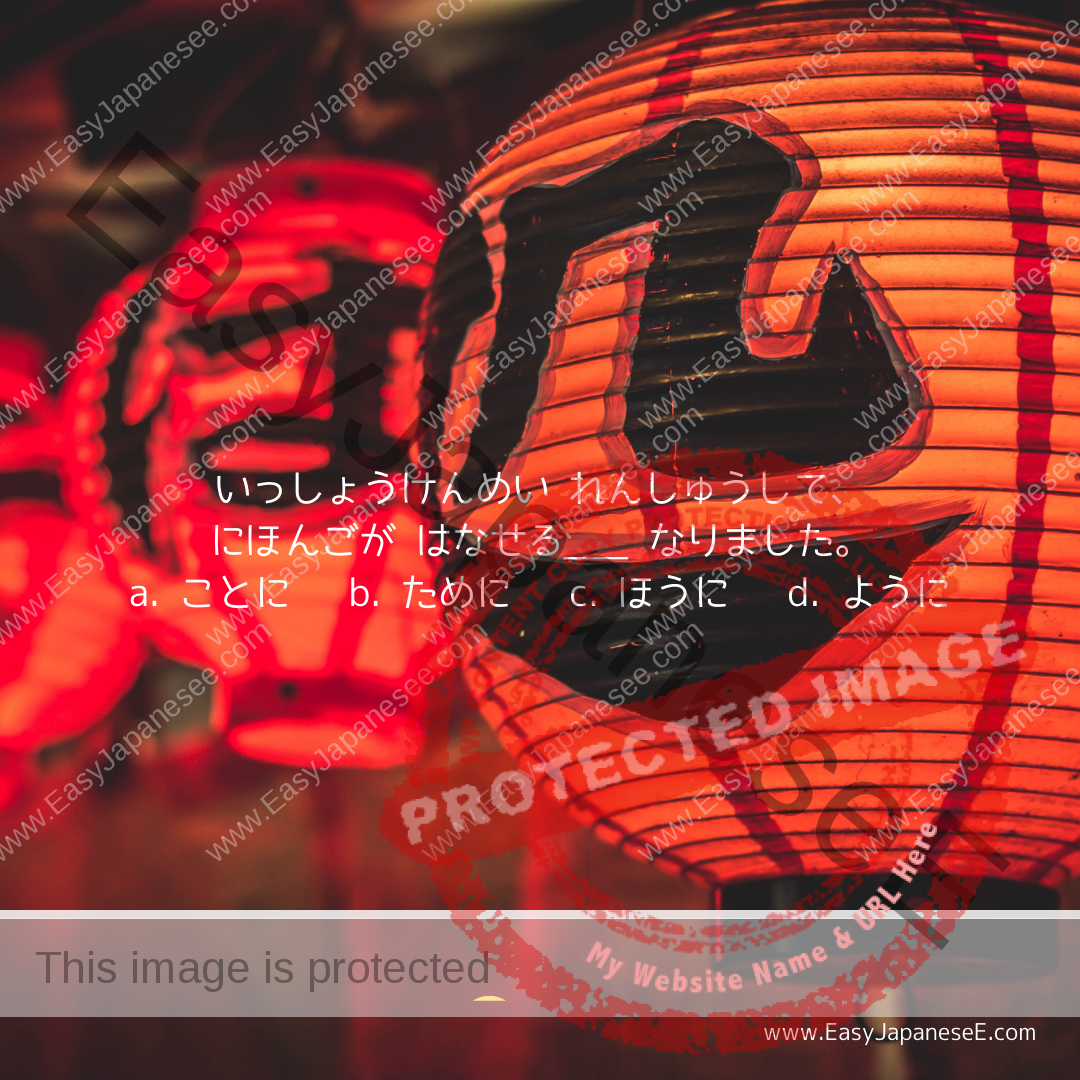

~ようになる is often used with a potential (form) verb to describe an acquisition of a skill. If NOT used with a potential (form) verb, it means “to start to …”
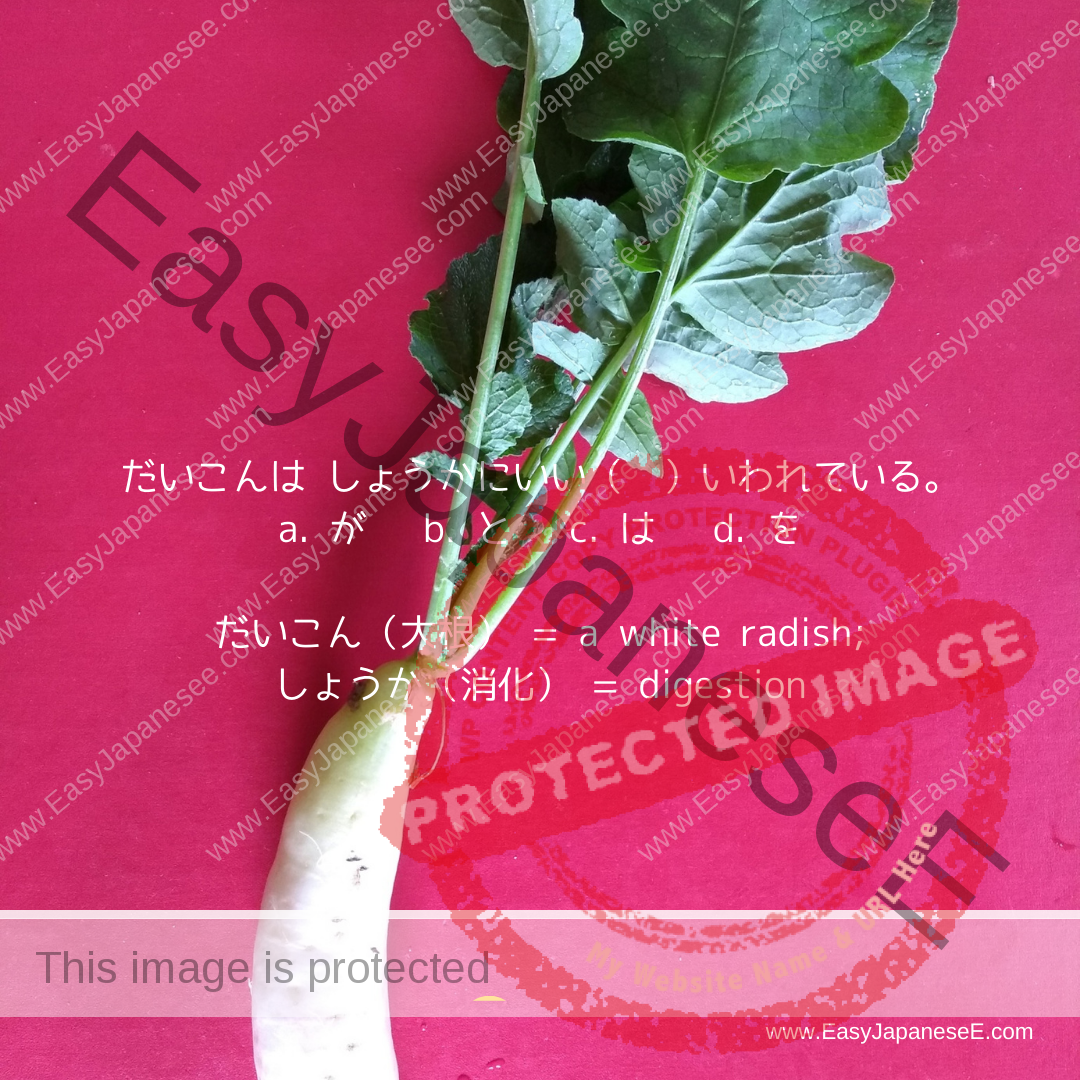
大根(だいこん)は消化(しょうか)にいい( )言われている。a. が b. と c. は d. を 消化(しょうか) = digestion Today’s expression is the quote marker と +…

ちゅうがっこう (1) えいご(2) すうがく(3) べんきょうしました。a. が b. で c. と d. に e. や f. を The intended meaning is:…
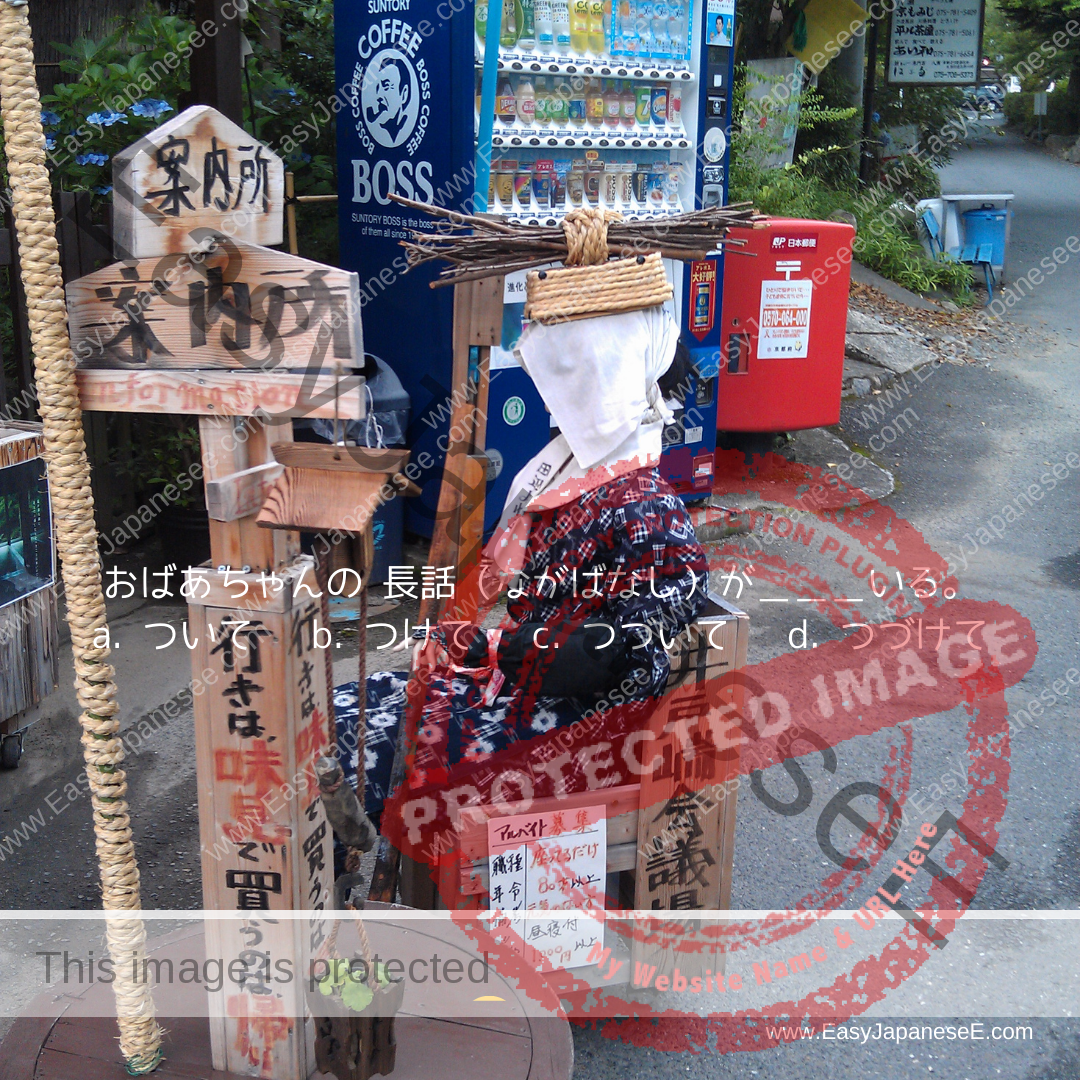
おばあちゃんの 長話(ながばなし)が___いる。a. ついて b. つけて c. つづいて d. つづけて The intended meaning is “Grandma’s long story is still going” and…
![[verb stem]+続(つづ)ける](https://www.easyjapanesee.com/wp-content/uploads/2020/10/201015-~つづける.png)
a. 父(ちち)は50年間(ねんかん)このラジオを聞(き)き__。a. ついた b. つけた c. つづいた d. つづけた The intended meaning is “My father kept listening to this radio…

When will you most likely hear “あの先生はやさしいと言ってもいい”? a. When the teacher is absolutely nice.b. When the teacher is rather nice.c.…
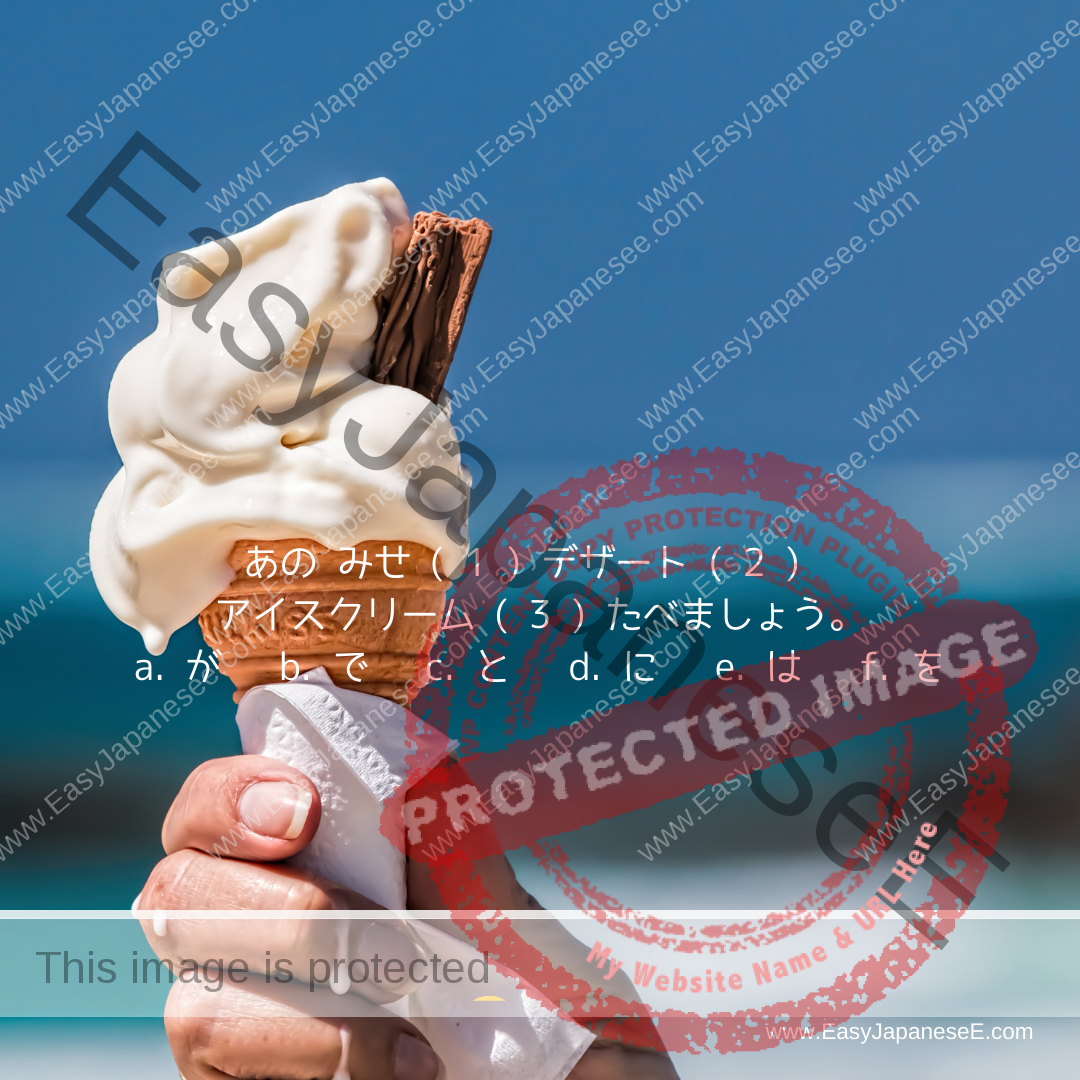
あの みせ ( 1 ) デザート ( 2 ) アイスクリーム ( 3 ) たべましょう。a. が b. で c. と d.…
![[past plain verb] + ばかり](https://www.easyjapanesee.com/wp-content/uploads/2020/10/201012-ばかり.png)
ばかり has many meanings depending on how it’s used but if it’s used in the form of [plain past verb] + ばかり, that means “to have just done ~”
![[verb stem] + 方(かた)](https://www.easyjapanesee.com/wp-content/uploads/2020/10/201008読み方.png)
[verb stem] + かた means “how to ~” or “the way (a person) do ~.” One thing worth while remembering is the particle before [verb stem] + かた is usually の, not を.
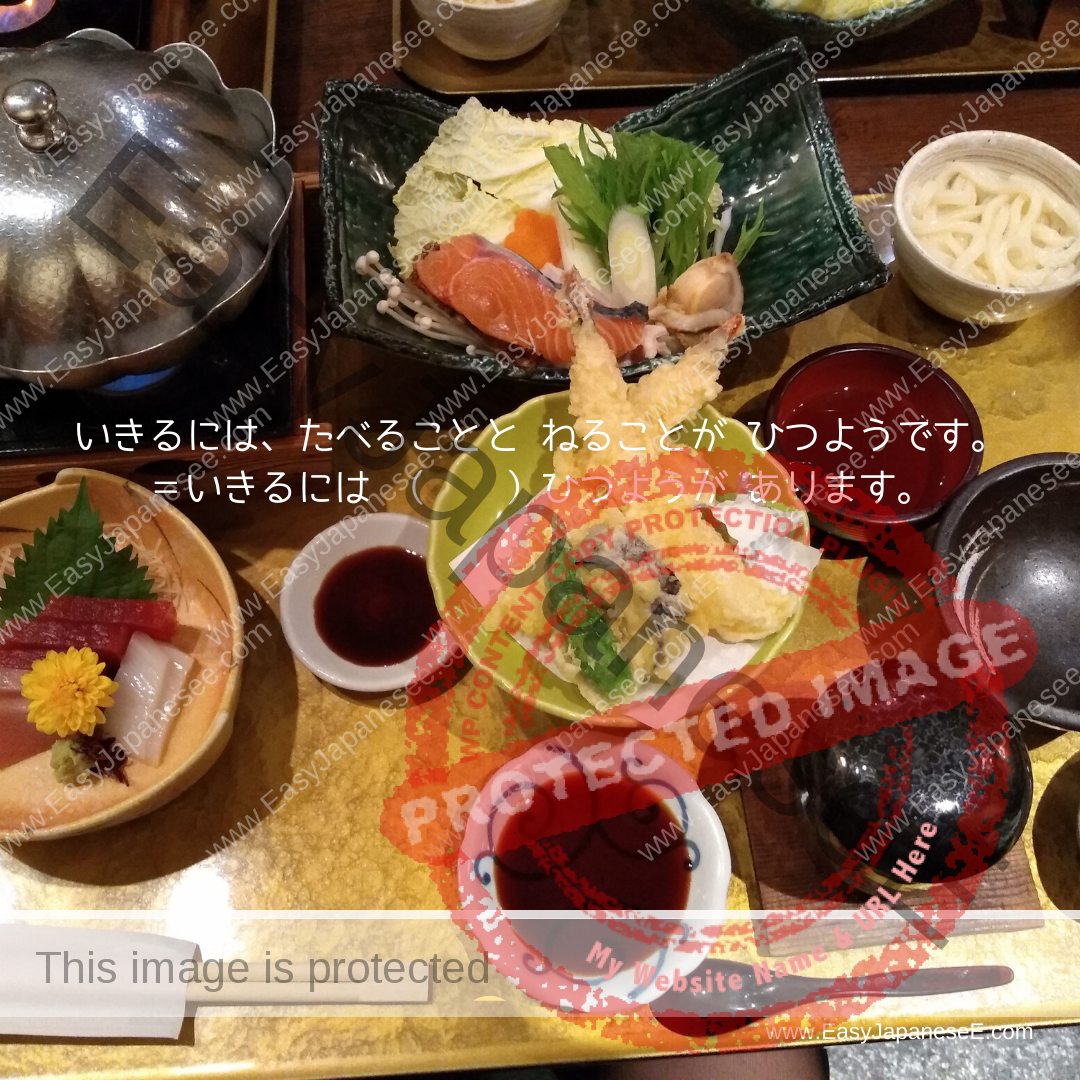
いきるには、たべることと ねることが ひつようです。=いきるには ( )ひつようが あります。 Not long ago, I talked about ひつよう as a なadjective and today I am…

A “contact clause” sounds like something very difficult but it’s just a short phrase that explains a noun. It’s easy! Read this explanation and have a go.
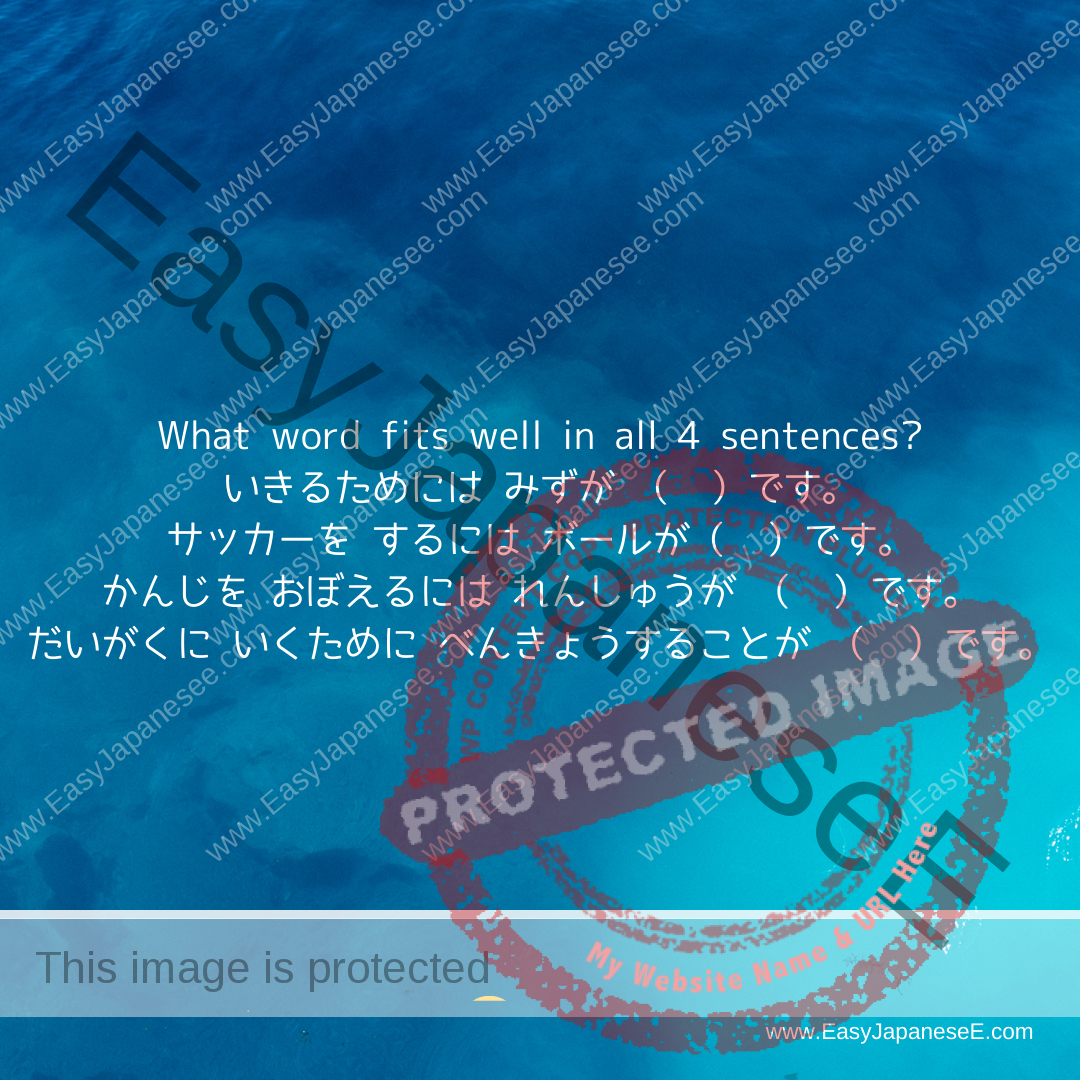
What word fits well in all 4 sentences? いきるためには みずが ( )です。サッカーを するには ボールが( )です。かんじを おぼえるには れんしゅうが ( )です。だいがくに いくために…
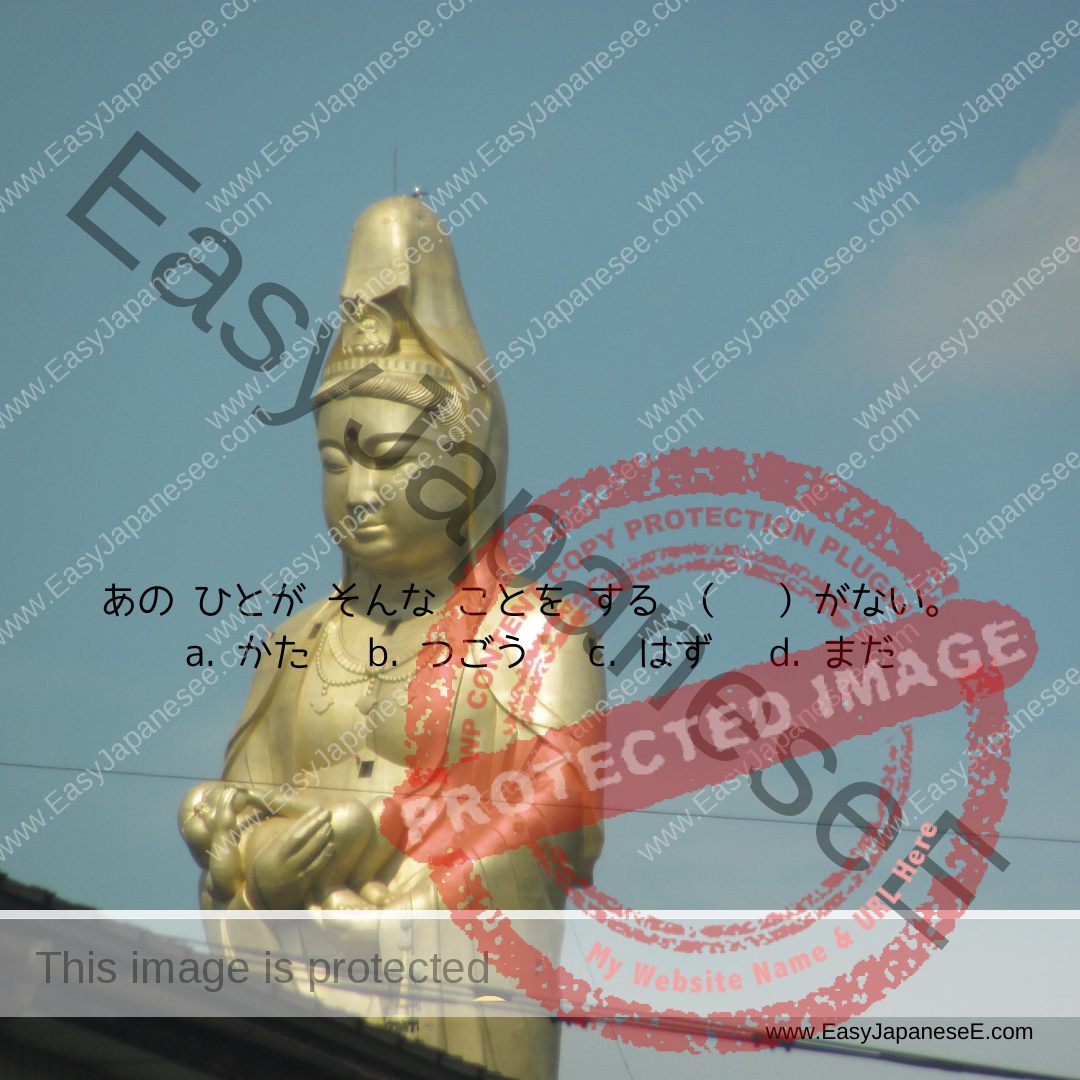
~はずがない expresses a belief that something will NOT happen. It can be used with a negative adjective/verb to express a strong belief that something WILL happen
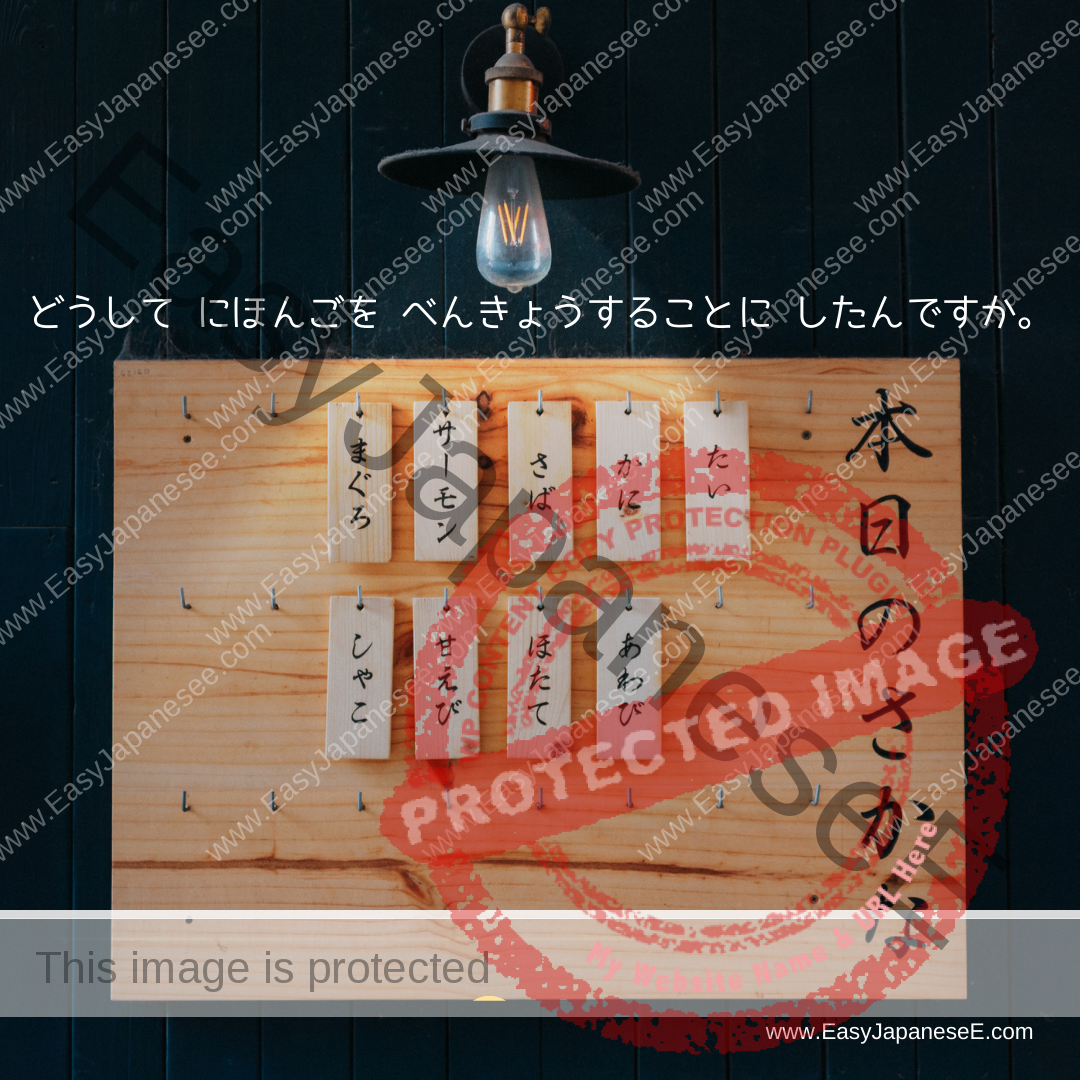
どうして にほんごを べんきょうすることに したんですか。コメントして ください。 ~することにする means “…have decided to do ~.” So my question here is why have you…
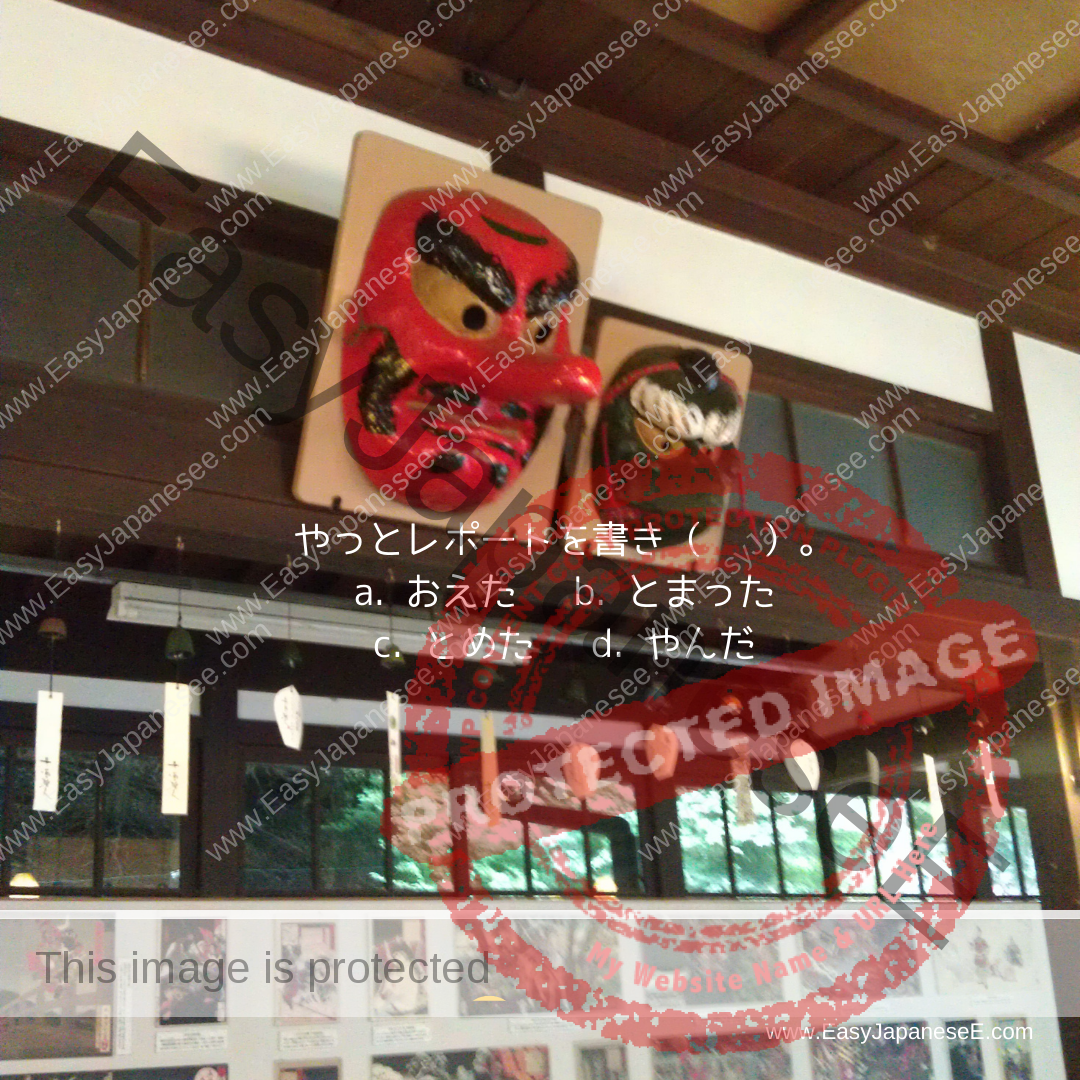
やっとレポートを書き( )。a. おえた b. とまった c. とめた d. やんだ Yesterday, I talked about ~出(だ)す and ~始(はじ)める both of which mean…
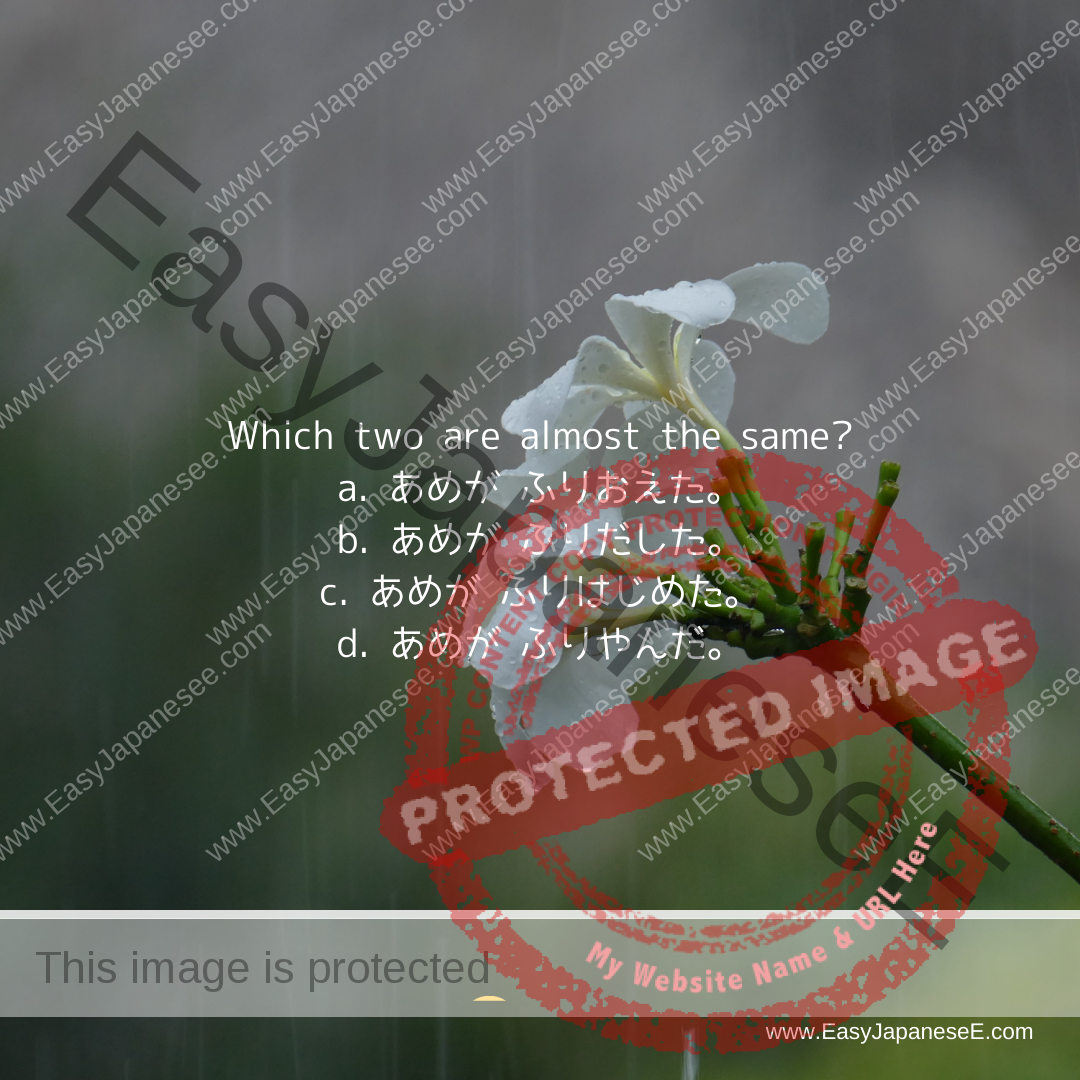
Which two are almost the same? a. あめが ふりおえた。b. あめが ふりだした。c. あめが ふりはじめた。d. あめが ふりやんだ。 [verb stem] + 出(だ)す and…

ひこうきと しんかんせんでは どっちのほう( )べんりですか。a. が b. の c. は d. を The intended meaning is between aeroplanes and shinkansen trains,…
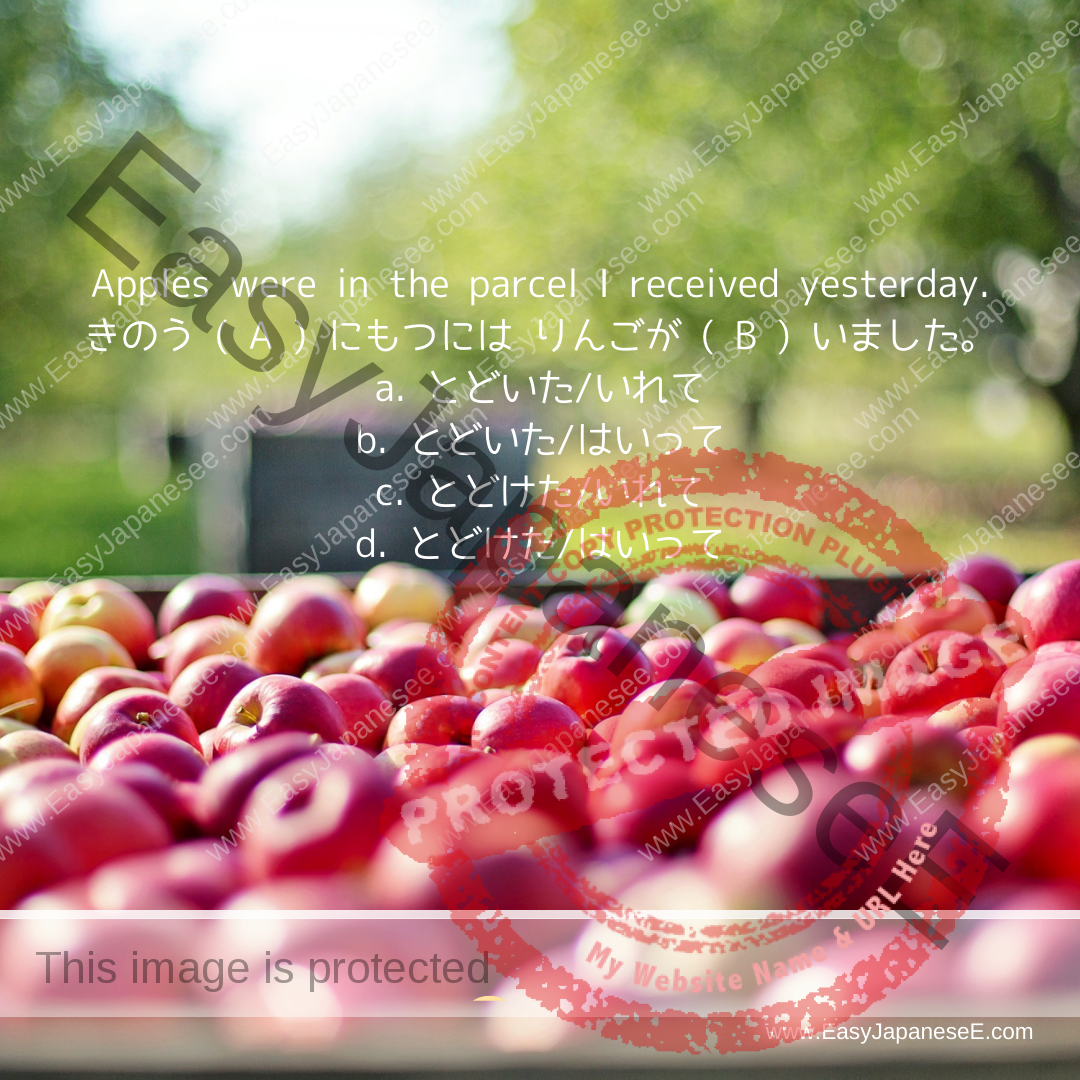
Apples were in the parcel I received yesterday.きのう ( A ) にもつには りんごが ( B ) いました。 a. とどいた/いれてb. とどいた/はいってc.…
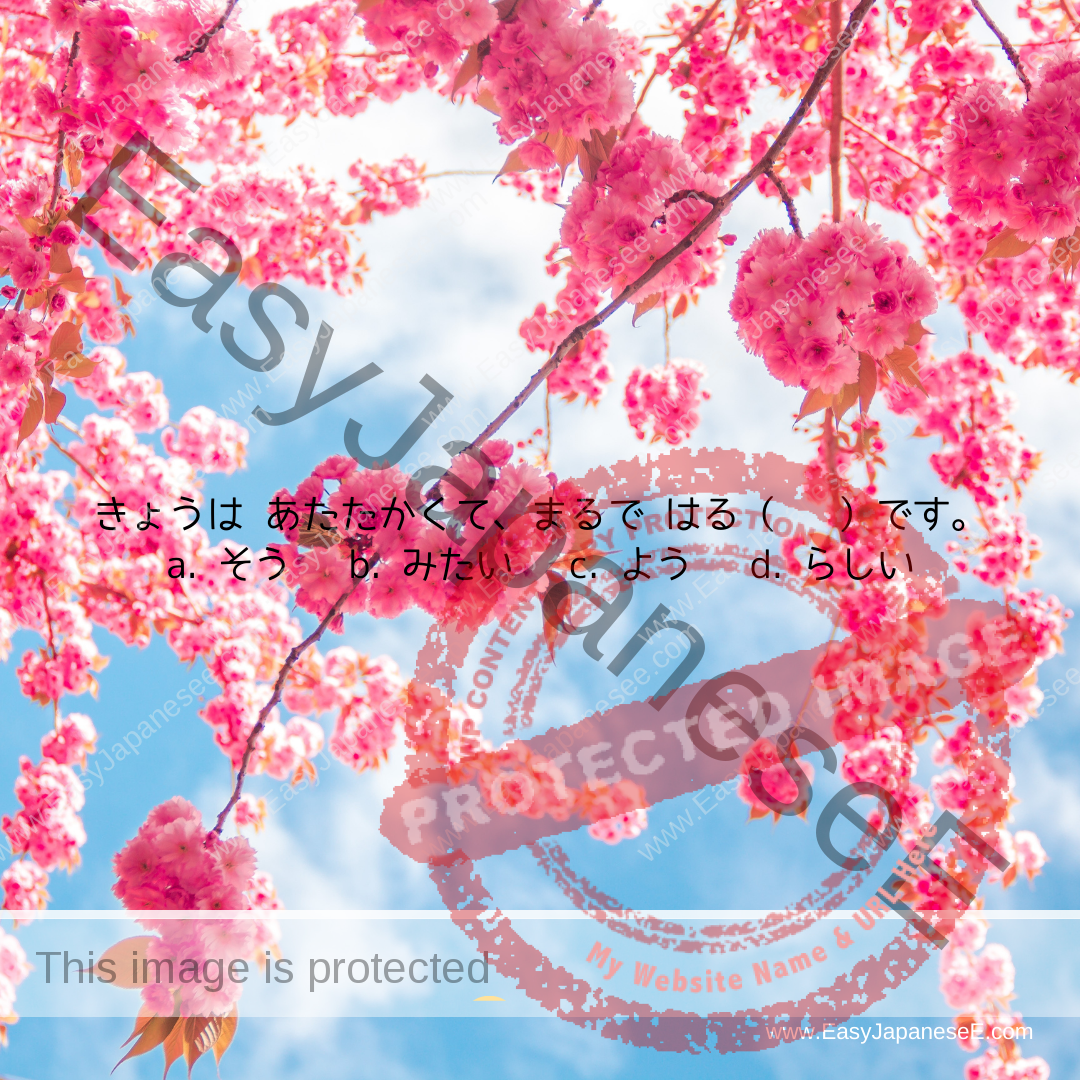
~みたい is used to describe “similarity” or “uncertain assertion.” It is sometimes used to give examples also. Have a look at examples.
![[a person]に [てform] ほしい](https://www.easyjapanesee.com/wp-content/uploads/2020/09/200921-なってほしい.png)
~てほしい is used when I want somebody else to do something. Usually used in the pattern of [a person]に [てform] ほしい. This post explains the negative version as well
